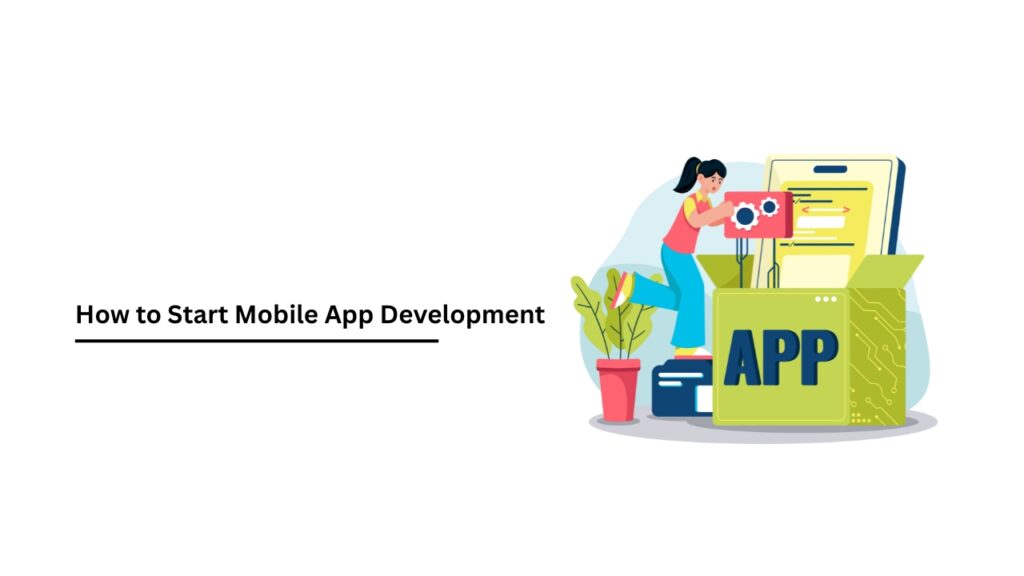Mobile apps are everywhere, from ordering food and tracking fitness to online banking and learning new skills. Have you ever wondered what it takes to build one of those apps yourself? The idea of becoming a mobile app developer might feel overwhelming at first, but with the right guidance, tools, and mindset, it’s a journey anyone can begin, even without a computer science degree.
This guide walks you through the essential steps to start your mobile app development journey, whether you’re a complete beginner or someone looking to upskill in tech.
1. Understand Why You Want to Learn App Development
Before you dive into code, get clear about your goals. Ask yourself:
-
Do you want to build your app idea?
-
Are you hoping to land a job in tech?
-
Do you want to freelance or start a side hustle?
Understanding your “why” helps you choose the right learning path and stay motivated when things get challenging.
2. Choose Your Path: Native vs. Cross-Platform Development
Mobile apps are generally built in two ways:
-
Native Development: Separate apps for iOS (using Swift/Objective-C) and Android (using Kotlin/Java).
-
Cross-Platform Development: One codebase runs on both platforms. Popular frameworks include Flutter, React Native, and Xamarin.
If you’re just starting and want to save time and effort, Flutter is a great option. It uses the Dart programming language and lets you create beautiful apps for both iOS and Android with one codebase.
3. Learn the Basics of Programming
You don’t need to be a master coder on day one, but understanding the fundamentals is crucial:
-
Variables, loops, and conditions
-
Functions and objects
-
Data structures like lists and maps
If you’re learning Flutter, start with Dart. You can practice coding on platforms like DartPad or use beginner-friendly sites like W3Schools or Codecademy to brush up on programming concepts.
4. Choose a Training Resource or Course
You don’t have to go it alone. There are many ways to learn app development:
-
Online platforms: Udemy, Coursera, YouTube, and freeCodeCamp
-
Bootcamps: Intensive, project-based learning experiences (offline or online)
-
Local training institutes: Many tech hubs offer professional Flutter training, often with placement support and hands-on projects
Choose a course that includes real-world projects, code reviews, and ideally, mentorship.
5. Set Up Your Development Environment
Once you’re ready to get your hands dirty, you’ll need the right tools. For Flutter, you’ll need:
-
Flutter SDK
-
Android Studio or Visual Studio Code
-
Emulators for testing apps on virtual devices
Follow the official Flutter installation guide and take your time setting it up. It’s a key first step in building and running your first app.
6. Start Small: Build Simple Apps
You don’t need to build the next Instagram on day one. Start with small, functional apps like:
-
A calculator
-
A to-do list
-
A weather app
-
A notes app
These projects help you understand app architecture, user interface (UI) design, and logic. Don’t be afraid to copy tutorials at first—what matters is that you understand what the code is doing.
7. Get Comfortable with UI/UX Design
Even if you’re not a designer, understanding the basics of UI/UX (User Interface/User Experience) will help you create apps people love to use. In Flutter, widgets make it easy to create clean, beautiful interfaces. You can use platforms like Figma or Adobe XD to plan your app layouts visually.
8. Learn How to Debug and Test
Bugs are part of the learning process. Learning to debug and test your code will not only help your apps run better but also make you a better developer. Flutter comes with built-in debugging tools, and the community is incredibly supportive.
9. Build a Portfolio of Projects
As you complete more apps, showcase them in a portfolio. Upload your code to GitHub, write a short explanation of what each app does, and add screenshots or video demos. A strong portfolio is your ticket to freelance gigs, internships, or full-time jobs.
10. Keep Learning and Stay Updated
Mobile app development is always evolving. Join developer communities like:
-
Flutter Community on Reddit
-
Stack Overflow
-
GitHub discussions
-
Local tech meetups or online forums
Also, follow tech blogs and YouTube channels to stay updated with the latest tools and trends.
Final Thoughts
Starting your mobile app development journey doesn’t have to be complicated. All it takes is a willingness to learn, a bit of patience, and the right tools. Whether you want to build your app, land a tech job, or just try something new, this is a great time to start.
Remember, every expert developer was once a beginner. The first step is the hardest, but also the most exciting.
